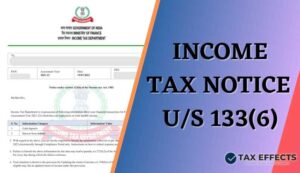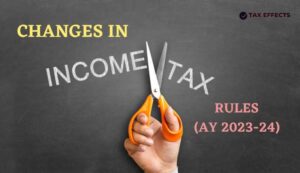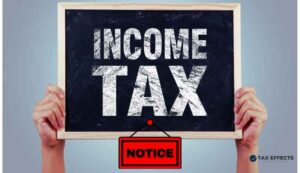
Notice for excess tax deductions, excess payment, and clarifications u/s Section 133(6)
In the last few months, we have seen numerous cases where income tax notices have been issued by the income tax department. Out of these
Home » Income Tax » Page 2

In the last few months, we have seen numerous cases where income tax notices have been issued by the income tax department. Out of these

In this article we will discuss about the certain cash transaction limits, as per income tax Act, 1961. As per the Income Tax Act in

In India, bonds are financial instruments that are used to raise capital by companies, financial institutions, and government entities. They are essentially debt instruments

LTA or leave travel concession is the allowance paid by your employer to cover your travel expenses, while you go on leave with or without

In this article, we will discuss about the difference between Financial Year (FY) & Assessment Year (AY) & changes made in the income tax rules

In this article, we will discuss Debenture, its feature, types, advantage & disadvantage. What are Debentures? A debenture is a type of bond

In this article, we will discuss about common investment mistakes investors should avoid while making investment. Common Investment Mistakes Investors should avoid while making

In this article, we will discuss about Section 54, 54EC & 54F of Capital Gain Tax Exemption. Section 54, 54EC, 54F: Capital Gain Tax

In this article, we will discuss about Life Insurance Policy Taxation Rules. Important points that need to be considered in case of taxability of Life

In this article, we will discuss Summary of Income tax notice issued under section 148A & 148 for not reporting income in ITR & its


In this article we will discuss about the certain cash transaction limits, as per income



In this article, we will discuss about the difference between Financial Year (FY) & Assessment

In this article, we will discuss Debenture, its feature, types, advantage & disadvantage. What

In this article, we will discuss about common investment mistakes investors should avoid while making


In this article, we will discuss about Life Insurance Policy Taxation Rules. Important points that

In this article, we will discuss Summary of Income tax notice issued under section 148A
It is always the knowledge which makes people empowered. Therefore, our effort through this website is to help others by sharing knowledge which is useful for them.
We provide tax related articles which is useful for various stakeholders starting from Students, Traders, Tax Practitioners, and the public at large.